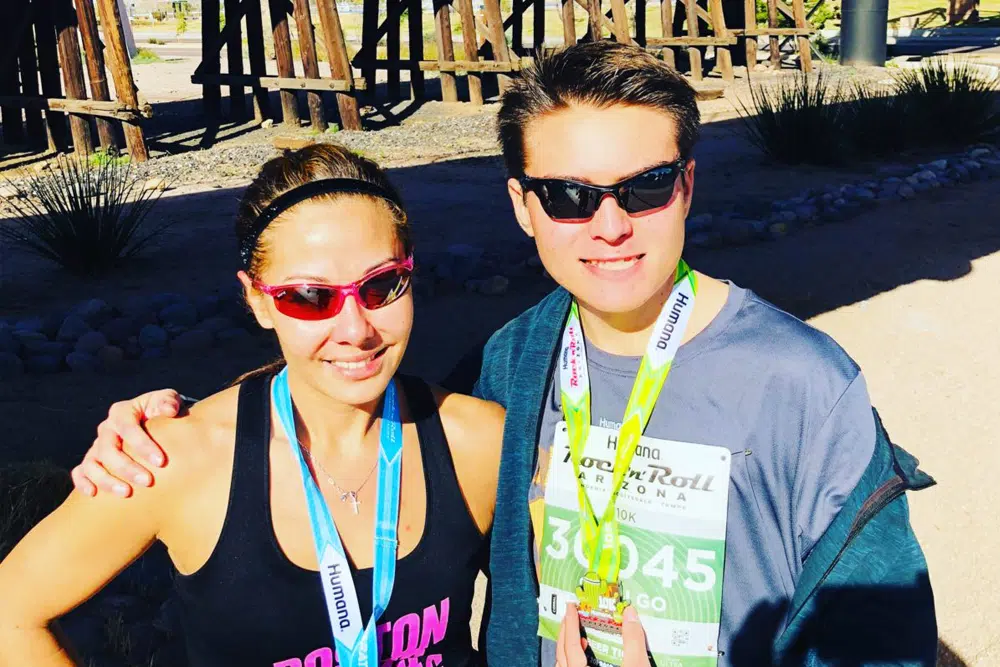My son, AJ, was barely one when we knew he was different. Unlike his cousin, who was born just a few months after him, AJ was not crawling, babbling, or attempting to walk. Instead, he smiled, he cooed, and put his arms up to be cuddled. My father-in-law said that AJ was just a late bloomer. I, on the other hand, had suspicions after putting myself through college teaching pre-school and studying developmental psychology at university.
By the time he got to Montessori, Mary Jane, our incredible teacher shared that AJ was behind the other children. He was, however, delightful, and happy to sit in the reading nook and look at picture books. He could not count by ten’s, he could not read simple words, and yet, despite these differences, was always quick to give a hug to someone who seemed sad.
We took AJ for hearing tests, to speech pathologists, occupational therapists, and eventually a developmental psychologist who deemed him ‘aspergersish.’
As AJ progressed in age, he did not progress academically. There were many nights where he could simply not understand the homework. He would cry and I would cry feeling like a failure to my own son. AJ began to retreat into his own private world, spending hours upon hours building Lego and not talking to anyone. My sweet, cuddly son began to become anxious. School became a source of misery and anxiety attacks became common. The principle of AJ’s school told me he needed to be on medication. I wanted to tell her several things that all involved swear words however I simply said, ‘he will not be going on medication.’ She was not qualified to say what she did despite her intentions.
In the spring of 2009, we made a bold decision to move to the United States. There, we enrolled AJ in a school for kids who simply learned differently. The lights were dimmed, the children were encouraged to get up and move around frequently, anyone could play on the sports teams, and most importantly, every morning the kids were all expected to look Mr. Walker, the head master, in the eye and shake his hand.
My son, who once stood and faced a corner, swaying back and forth, while we were at a dinner party, began to come out of his shell. Through the amazing team of teachers, onsite therapists, and the different approach to learning, AJ began to thrive. He went from not feeling confident on a sports team to playing soccer and flag football. Three summers ago, he announced that he was going out for a run and has been racing ever since. Recently, we received a recruiting letter from a college in Iowa – the first time, we hear, that a student at the school has been approached.
AJ now reads, has learned sign language, has friends, and intends to head to Arizona State University. For a kid who was once told that he would never qualify for college to someone who is confident, articulate, and sure, there is ample evidence that the right environment is conducive to turning ‘you can’t’ into ‘I did.’
When I think of all of the ‘you can’t do that’s’ my son received from educators and classmates:
- Play team sports
- Read without help
- ‘Be normal’
- Learn another language
- Go to college
- Be okay without medication
My heart is saddened. There are likely many children out there who have been consistently told that they can’t do something and unfortunately lack the proper environment to realize that they can.
As adults, we too, are sometimes in an environment that isn’t conducive to our success. We start to believe that we can’t do things when the reality is that it isn’t the business we own, the genetics we have, our generational history, or our past, that actually matters, it is being in the right environment that changes everything.
It is said that our wealth is directly proportional to the five people we spend the most time with. I would also suggest that our health and our emotional state could have a similar correlation. You do not have to move to be in a better environment, though that might help, what you must do is create an environment that supports your goals and dreams. From the books you read to the podcasts you listen to and the videos you watch – all of these messages are either feeding your soul or depleting your drive; they are all creating your environment.
Moving AJ to an environment where everyone had a learning difference gave him the perspective that his differences did not have to be determents. Feeding your soul with people who have transcended the odds, had success, and are willing to lift you up instead of tear you down is no different. What you begin to observe is that many successful people also had to defy the odds.
Here is a list of billionaires, celebrities, and athletes who all have some form of difference:
Billionaires Who Are Dyslexic
- Steve Jobs
- Warren Buffet
- Charles Schwab
- Richard Branson
- Bill Gates
Autism Spectrum
- Bill Gates
- Daryl Hannah
- Tim Burton
- Susan Boyle
- Dan Akroyd
ADHD Athletes
- Michael Phelps
- Simone Biles
- Magic Johnson
From Olympic medals to 10 figure bank accounts, these individuals are a mere sampling of people who, despite the odds, went from being told they couldn’t to being able to say that they did.


